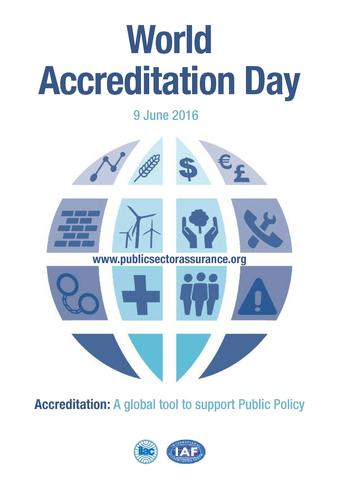Taking Measure
Just a Standard Blog

Want to pique interest in a subject area? Throw a party — right? Enter 2008 and World Accreditation Day. It was Monday, June 9, to be exact. I would love to be able to say that the date has some significance, but it doesn’t. To my knowledge, it was just randomly selected by the event organizers. And while the specific date of June 9 might not have had significance, the purpose of the celebration did and still does. The annual event, jointly sponsored by the International Laboratory Accreditation Cooperation and International Accreditation Forum, is part of a global initiative to raise awareness about the importance of accreditation.
You might ask “what is accreditation?” It’s an interesting question, and one that is easily answered, but maybe not easily understood. If you google the word, you’ll find entries related to education and health care, but this is not exactly what conformity assessment geeks like myself mean.

No, the definition we use, per the International Standards Organization, is “a third-party attestation related to a conformity assessment body conveying formal demonstration of its competence to carry out a specific conformity assessment task.”
To me and others familiar with the lingo, this definition makes perfect sense, but it’s probably about as clear as mud to anyone else. Because accreditation is so important, it’s vital that those of us in the business clearly communicate what it offers. So here’s my first attempt: Accreditation is a process by which a third party assesses an organization, like a testing laboratory, in order to determine if that organization is consistently producing accurate and dependable data using appropriate standards.
That might still sound a bit confusing, so let me give an example that always works with my family when I try to explain what accreditation is. A few years back there was a lot of concern over the amount of lead in children’s toys. When 35 percent of toys that were “shown” to be safe turn out not to be, it’s bound to raise some concerns over the ability of the laboratories responsible for testing the safety of children’s toys and the accuracy of the results from those tests.
After a review of the overall process, the Consumer Product Safety Commission began to require that every children’s product be tested by accredited laboratories that were found competent to conduct specific tests, like finding lead, and get accurate results reliably and repeatedly.
The National Voluntary Laboratory Accreditation Program (NVLAP) at NIST, which I’ve headed since March 20, 2016, provides third-party accreditation to testing and calibration laboratories. NVLAP was established in 1976 and celebrates its 40th anniversary this year. Over those 40 years, NVLAP has grown to support 19 accreditation programs, each of which were set up in response to requests from other government agencies or private-sector organizations or to respond to what we saw as the needs of the testing community or industry.
Testing the testers to make sure they can do their jobs right — that’s the essence of accreditation. People like me who run accreditation programs take our work seriously because we know that people’s health and safety are riding on it. To me, there’s nothing worse than false confidence, than thinking you knew the right answer when you didn’t, all because a test isn’t being performed accurately.
As I hope I’ve shown, accreditation is more than jargon and ticking checkboxes — it affects people’s lives. It’s regrettable that companies make mistakes or cut corners that result in shoddy or dangerous products, but not catching those products before they harm people, that’s what keeps me up at night and gets me out of bed every day.
Over the years since its inception, World Accreditation Day has focused on developing an understanding of accreditation and its impacts on the global marketplace. Topics have ranged from accreditation’s impacts on subjects ranging from safe food and drinking water to energy, global acceptance and world trade, just to name a few.
This year’s event focuses on accreditation’s support of public policy to deliver better regulations, environmental protection, public safety, fraud prevention, fair markets and public trust. Protecting children from lead is just one of many examples of how accreditation and conformity assessment provide benefits to government and regulators, and ultimately, you.
Celebrate World Accreditation Day on Twitter using #WAD2016!





